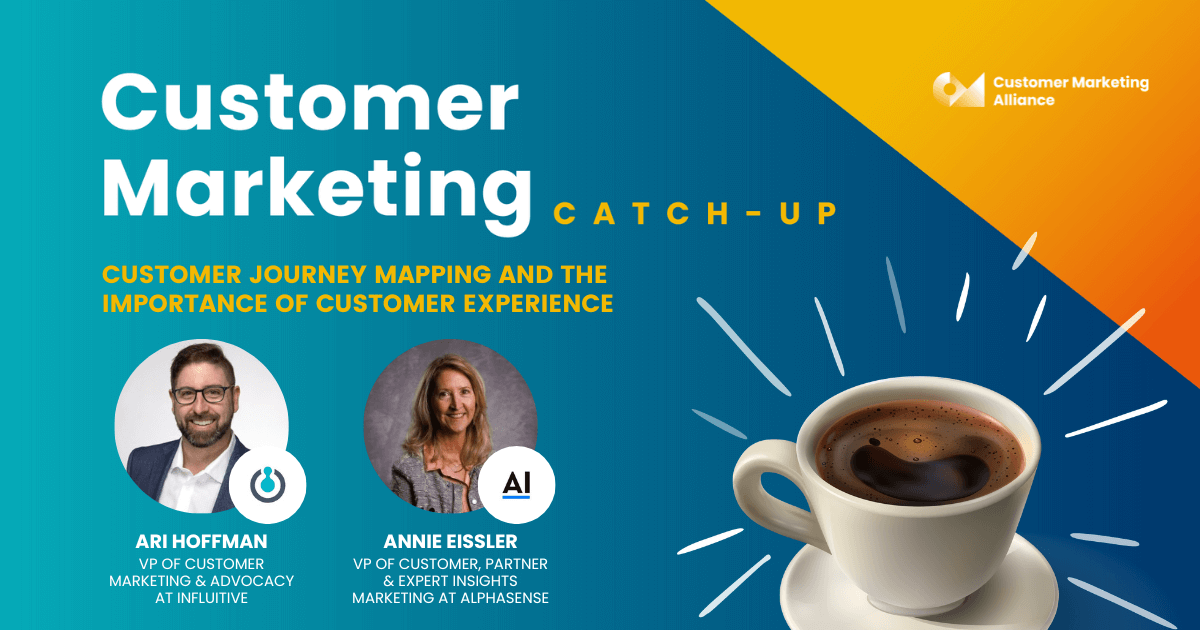Personalization is the magic that turns your business from "just another option" to "the one and only" in your customer's eyes.
What better way to show your customers that their individual preferences and needs are your top priority? Building experiences based on their own desires - rather than just trying to sell a product to them - is what makes customers return time and time again.
And guess what? Happy customers who feel understood and valued are more likely to stick around, spread the word, and keep coming back for more, boosting your bottom line along the way.
In this article, we’ll cover:
- Why personalization matters to C-suite and leadership levels
- Some strategies for effective personalization
- The role of the C-suite in driving personalization initiatives
- Growth tips for personalization
Why personalization matters to C-suite and leadership levels
Personalization matters to C-suite and leadership levels because it's the secret sauce that can set your company apart in a sea of competitors. And when everyone’s doing personalization, this means really understanding and getting to know your own customers.
You can’t just stop at tailored product suggestions, or birthday discounts. These have their place, but when everyone is doing them, you must figure out how your customer base is unique - and then cater to those unique qualities.
Understand your customers
What makes your customer base tick? What do they love?
Think about the current strategies you already have in place, and then take them a step further.
Do you have a Slack channel set up? Social media platforms? Your customers will be talking and interacting all the time on social media, so listen to what they’re saying! And not just about your own company, but your competitors too.
What feature do they think you’re missing, what pain points or frustrations are they airing to other customers? Use that as a starting point to understand the current landscape for customer sentiments and then build on that by reaching out yourself and joining in the conversation.

Personalization drives loyalty
Personalization drives loyalty like nothing else; when you show your customers that you know them and care about their needs, they're more likely to stick with you for the long haul.
And the best way to make that loyalty cement itself indefinitely? Show your customers that you are in for the long haul too. Do you currently have strategies that follow along the customer journey as a whole, or does your work stop after the second purchase?
Keep up with your customers' lives, and make sure you’re there to support that too.

Maximize marketing ROI: Some strategies for effective personalization
Now, it's not all just about warm fuzzies; personalized marketing can lead to tangible results, like higher conversion rates and increased revenue.
Now we’ve already spoken about personalized offers and product recommendations, but don’t forget some of the other options too:
- Dynamic content customization: Tailoring website content, email campaigns, and advertisements based on user behavior, demographics, and past interactions. By serving relevant content to each individual, you increase engagement and conversion rates, ultimately driving higher ROI.
- Segmented email campaigns: Dividing your email subscriber list into segments based on factors such as purchase history, interests, or demographics, and sending targeted messages to each group. This approach improves email open rates, click-through rates, and ultimately, conversion rates, resulting in a higher ROI for your email marketing efforts.
- Behavioral retargeting: Using cookies and tracking pixels to display personalized ads to users who have previously visited your website but did not complete a desired action, such as making a purchase. By retargeting these individuals with relevant ads based on their browsing history, you can re-engage them and drive them back to your site, increasing the likelihood of conversion and ROI.
- Localized marketing: Tailoring marketing campaigns and messages to specific geographic regions or locations. By addressing regional preferences, cultural nuances, and local events, you can resonate more effectively with target audiences, driving higher engagement and conversion rates within each locality and ultimately increasing ROI.
- Personalized landing pages: Creating unique landing pages for different audience segments based on their interests, demographics, or past behavior. By delivering a customized experience from the moment users click on an ad or link, you can enhance relevance and drive higher conversion rates, ultimately improving ROI for your digital marketing campaigns.

- Predictive personalization: Utilizing predictive analytics and machine learning algorithms to anticipate customer needs and preferences before they even express them. By proactively offering relevant products, content, or recommendations, you can increase customer satisfaction, reduce friction in the purchasing process, and ultimately drive higher sales and ROI.
The role of C-suite in driving personalization initiatives
The C-suite is the engine behind the personalization train. They're the ones with the power to steer the company in new directions, and when it comes to personalization initiatives, their role is absolutely crucial.
Personalization cannot happen inside a silo. Customer marketing can’t be the only department dedicated to the task of delivering personalization initiatives - especially when customer marketing budgets are so small in comparison to others.
So, customer personalization must be a company-wide initiative, which is where C-suite comes in. They're the ones who set the tone and provide the resources needed to make personalization happen. Whether it's investing in data analytics tools, hiring top-notch talent, or breaking down silos between departments, they're the ones making it happen behind the scenes.
For personalization to become consistent in your brand image, you going to need people at the helm who truly understand what personalization is, how it should be put out there, and where to go with it next.
Plus, their buy-in and support are what motivates everyone else in the company to get on board with personalization in the first place. It’s never just a one-and-done, and shouldn’t be left on the shoulders of smaller departments like customer marketing to ensure personalization is taken care of.
Growth tips for personalization
So, how can personalization become a company-wide initiative? How can you ensure such a strategy grows alongside your other business successes?
Invest in technology: Choose the right tools for personalization initiatives
CRM tools
Get your hands on some top-notch customer relationship management (CRM) software—it's like having a personal assistant for each customer, keeping track of their preferences, behavior, and interactions with your brand.
Some examples include: Salesforce, Hubspot, and Zoho CRM.
Marketing automation
Consider investing in a robust marketing automation platform that can handle the heavy lifting when it comes to delivering personalized messages and offers at scale. With the right automation tools, you can streamline processes, save time, and ensure consistency across all your personalization efforts.
Some examples include: Marketo, Pardot, and ActiveCampaign.
Data analytics
Don't forget about data analytics tools—think predictive analytics, machine learning, and advanced segmentation capabilities. These tools can help you uncover valuable insights from your customer data, predict future behaviors, and fine-tune your personalization strategies for maximum impact.
Some examples include: Google Analytics, Mixpanel, and Tableau.
Encourage experimentation and innovation
One way to make personalization an investment for your whole business is to encourage and reward innovative ideas and suggestions, regardless of what level of your business they come from.
Create a safe space for testing and learning from both successes and failures and celebrate the innovation that drives tangible results. Growth never comes out of doing the same thing for years on end; evolution is a must, and evolution can only come through allowing failure to be a part of your process.
Dedicated teams to personalization
Now we specifically mean creating dedicated cross-functional teams or innovation labs, to avoid that pesky siloing. These teams must be made up of people from across your business to ensure that every single team is ‘in the know’ about all things personalization.
Provide these teams with resources, autonomy, and support to experiment with emerging trends such as artificial intelligence, machine learning, or immersive experiences.
Implement a reward system
Reward systems work wonders when it comes to encouraging innovation. Be it a monetary reward, or something as simple as a shoutout recognition, people like seeing their efforts recognized.
Celebrate team members who take risks, think creatively, and drive positive outcomes through their personalization initiatives. Don’t forget to celebrate your employees as much as you do your customers!
Get to know your customers
The one thing we can never know is what goes on in our customers' minds. But becoming a master of consumer psychology brings us very close. 🔍
Personalization relies on understanding who uses your product, and what better way to begin this journey than by developing your own consumer psychology skills?
⏰ 4+ hours of content
✅ 100+ exam questions
📝 6 modules
🔖 Official certification
👨🏼💻 100% self-paced
Take the course today.





